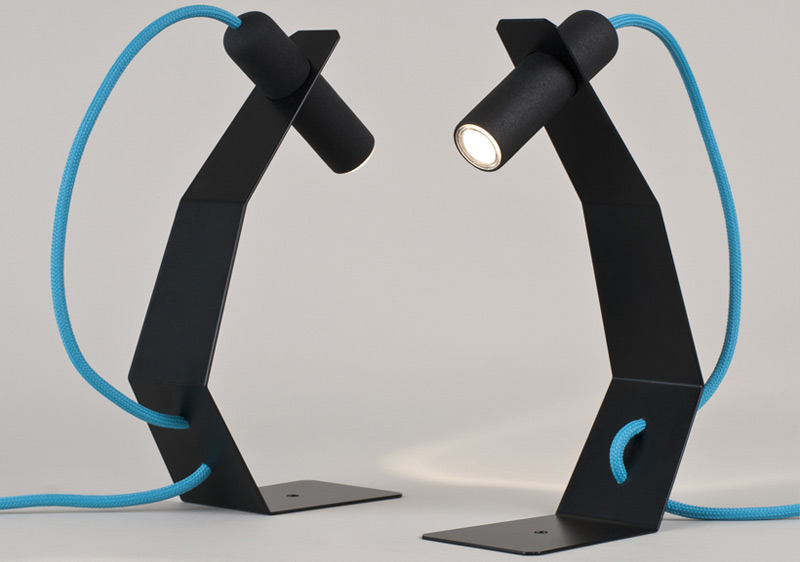Link About It: This Week’s Picks
Revisited lunar reportage, Wes Anderson-inspired sunglasses, the tale of disco’s revenge and more in our roundup of the web

Elena Tamburini’s Touch-Encouraging Furniture
 Inspired by sex as taboo, especially among older people, Italian designer Elena Tamburini created Filotea—a collection of furniture that encourages physical affection whether solo or with another individual. The range includes several standout pieces: Otello is a mirror surrounded by feathers, which allows the user to caress their own face, and the Filomena is a body brush that stimulates the skin. Our favorite is the Alvise, a coffee table made to be placed between chairs, which encourages two seated people to hold hands across a pair of symmetrical cushioned armrests. With an Art Deco influence, the pieces are opulent (with lots of brass, glass and jewel tones) but functional with a delightful and important intention. Read more at Dezeen.
Inspired by sex as taboo, especially among older people, Italian designer Elena Tamburini created Filotea—a collection of furniture that encourages physical affection whether solo or with another individual. The range includes several standout pieces: Otello is a mirror surrounded by feathers, which allows the user to caress their own face, and the Filomena is a body brush that stimulates the skin. Our favorite is the Alvise, a coffee table made to be placed between chairs, which encourages two seated people to hold hands across a pair of symmetrical cushioned armrests. With an Art Deco influence, the pieces are opulent (with lots of brass, glass and jewel tones) but functional with a delightful and important intention. Read more at Dezeen.
Documenting Strip Clubs Throughout the American South
 French photographer François Prost’s Gentlemen’s Club collection archives the sun-soaked facades of strip clubs across the southern US—everywhere from the beaches of Florida to downtown Houston. Through 193 photos, Prost surveys the design of these buildings, with their “generic signifiers of sex and sensual pleasure,” focusing on parts of the country that have “conservative and puritan reputations.” The exteriors are brightly colored, eerily similar from city to city and largely outdated—even though they’re predominantly still in operation. “It is a way to study and to try to understand this country,” Prost tells CityLab. Read and see more there.
French photographer François Prost’s Gentlemen’s Club collection archives the sun-soaked facades of strip clubs across the southern US—everywhere from the beaches of Florida to downtown Houston. Through 193 photos, Prost surveys the design of these buildings, with their “generic signifiers of sex and sensual pleasure,” focusing on parts of the country that have “conservative and puritan reputations.” The exteriors are brightly colored, eerily similar from city to city and largely outdated—even though they’re predominantly still in operation. “It is a way to study and to try to understand this country,” Prost tells CityLab. Read and see more there.
Disco’s Revenge: House Music
 What legendary DJ Frankie Knuckles called “Disco’s Revenge,” house music gathered steam months after Chicago’s “Disco Demolition” in 1979—in which 55,000 fans attended a White Sox baseball game in order to destroy disco records beforehand. They rushed the field, shattered their records, and newspapers proclaimed the death of the genre. The early ’80s, though, saw a rise in house music, which Vox explains was essentially three ingredients: “a disco sample, drum sound and uptempo piano.” The genre led to various others, from acid house, deep house and italo, proving that disco never actually died. Find out more, especially the massive house track “Ride on Time,” at Vox.
What legendary DJ Frankie Knuckles called “Disco’s Revenge,” house music gathered steam months after Chicago’s “Disco Demolition” in 1979—in which 55,000 fans attended a White Sox baseball game in order to destroy disco records beforehand. They rushed the field, shattered their records, and newspapers proclaimed the death of the genre. The early ’80s, though, saw a rise in house music, which Vox explains was essentially three ingredients: “a disco sample, drum sound and uptempo piano.” The genre led to various others, from acid house, deep house and italo, proving that disco never actually died. Find out more, especially the massive house track “Ride on Time,” at Vox.
How Human Voices Affect Wild Animals
 Humans are super-predators—even when we’re not actively behaving as such. A recent study conducted in an English forest documented the reactions beavers had to the sound of wolves, bears and humans. While they ignored the wolf sounds and were “mildly concerned” by the sound of a bear, the beavers were “profoundly disturbed” by the sound of human speech. A different study played human speech in proximity to a lion’s kill—the lion fled more than 80% of the time. Other predators, like bobcats, mountain lions and opossums also behaved differently when they believed humans could be around the corner. “The implication is that we don’t need to cut down the forest to have an impact on wildlife,” Justin Suraci, a researcher in the field, tells The Atlantic. These studies serve as pertinent reminders of the affects we have on the species around us—and to be mindful of it. Read more at The Atlantic.
Humans are super-predators—even when we’re not actively behaving as such. A recent study conducted in an English forest documented the reactions beavers had to the sound of wolves, bears and humans. While they ignored the wolf sounds and were “mildly concerned” by the sound of a bear, the beavers were “profoundly disturbed” by the sound of human speech. A different study played human speech in proximity to a lion’s kill—the lion fled more than 80% of the time. Other predators, like bobcats, mountain lions and opossums also behaved differently when they believed humans could be around the corner. “The implication is that we don’t need to cut down the forest to have an impact on wildlife,” Justin Suraci, a researcher in the field, tells The Atlantic. These studies serve as pertinent reminders of the affects we have on the species around us—and to be mindful of it. Read more at The Atlantic.
Revisiting the New Yorker’s Coverage of the Apollo 11 Landing
 In the Talk of the Town section of The New Yorker’s 26 July 1969 issue, reporters visited eight moon-landing parties—and documented the excitement that unfolded. From 50th Street and Sixth Avenue to the headquarters of NBC at 30 Rockefeller Plaza, audiences tuned in to the incredible quest and watched anxiously as Neil Armstrong and Buzz Aldrin ventured into the unknown. Spliced with footage from the moon, The New Yorker details intimate reactions otherwise unseen. One scene in particular unfolds in a Harlem bar, between a bartender and lousy customer who wants to leave the jukebox on rather than watch. She says to him, “Be quiet. You’re full of nothin’ but Seagram’s Gin. I want to see the men walking on the moon.” Read more at The New Yorker.
In the Talk of the Town section of The New Yorker’s 26 July 1969 issue, reporters visited eight moon-landing parties—and documented the excitement that unfolded. From 50th Street and Sixth Avenue to the headquarters of NBC at 30 Rockefeller Plaza, audiences tuned in to the incredible quest and watched anxiously as Neil Armstrong and Buzz Aldrin ventured into the unknown. Spliced with footage from the moon, The New Yorker details intimate reactions otherwise unseen. One scene in particular unfolds in a Harlem bar, between a bartender and lousy customer who wants to leave the jukebox on rather than watch. She says to him, “Be quiet. You’re full of nothin’ but Seagram’s Gin. I want to see the men walking on the moon.” Read more at The New Yorker.
Tens Sunglasses’ Wes Anderson-Inspired Filtered Lenses
 Expanding upon their line of stylistically filtered eyewear, Tens Sunglasses adopts a rich, warm hue for their newest release, the Spectachrome, now available to back on Indiegogo. Complete with a quirky video, these sunglasses set their wearer into a color spectrum and texture that matches Wes Anderson-directed films. And, not only are the glasses a trip into his vision, but they’ll protect yours too—with UV400 protection. Learn more and get your own pair at Indiegogo.
Expanding upon their line of stylistically filtered eyewear, Tens Sunglasses adopts a rich, warm hue for their newest release, the Spectachrome, now available to back on Indiegogo. Complete with a quirky video, these sunglasses set their wearer into a color spectrum and texture that matches Wes Anderson-directed films. And, not only are the glasses a trip into his vision, but they’ll protect yours too—with UV400 protection. Learn more and get your own pair at Indiegogo.
Link About It is our filtered look at the web, shared daily in Link and on social media, and rounded up every Saturday morning.












